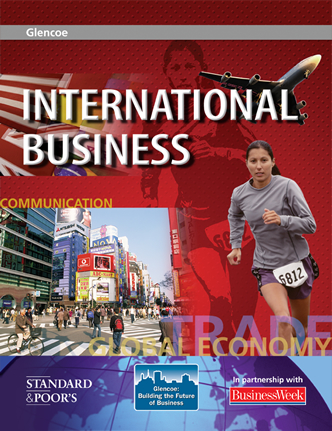
International BusinessChapter 15: International Career PlanningWorld Market Passport
The Environment The beautiful country of Spain is located in Southern Europe, with two small enclaves in North Africa. Spain's borders meet Portugal to the west, Gibraltar to the south, and France and Andorra to the north. To its east is the Mediterranean Sea, in which there are several Spanish islands. Lively cities, the dramatic peaks of the Pyrenees and Sierra Nevada mountain ranges, and several major rivers make up this diverse country. Its climate is also diverse, from mild and stable in some areas to cool and wet in others. This country is home to many important architectural contributions in cities such as Madrid, its capital, Barcelona, and Valencia. History Evidence links modern man to the region around 35,000 BC, and by 4000 BC, much of Spain was settled by the Iberians. The Celts arrived later, settling in the north. Around 1100 BC, Phoenician seafarers set up trading colonies in Cadiz and along the coast, while Greeks traded along the northeastern coast. The Iberian Peninsula later came under the rule of Carthage, but was occupied by Rome for six centuries, laying the foundations for Spanish language and culture. In the fifth century AD, Spain was ruled by the Visigoths. Then, in 711, the Muslims of northern Africa launched an invasion across the Strait of Gibraltar. Their presence lasted more than seven centuries, though the Christian kingdoms to the north increased in power over generations. The last Moorish kingdom, Granada, was conquered in 1492, which was the same year that the discovery of the New World by Christopher Columbus marked Spanish history forever. From the early 18th century, French influence persevered for over 100 years until the defeat of Napoleon's army during the Peninsular War. During the 19th century, coups d'etat and changes of government were frequent, as was the increasing power of the working class. In 1931, Spain was declared a republic. Conservative reaction from the church and army sparked the Spanish Civil War, which raged from 1936 to 1939. Under the dictator Franco, Spain was ostracized from the community of nations until it became strategically attractive to the United States during the Cold War. In 1975, Franco died, and King Juan Carlos took the throne to lead Spain as a democratic state. Culture and People With a history of influence from a variety of cultures, Spanish culture is so bold and diverse. From its lively and enchanting music and food, to its colorful cities, important writers, and traditions such as afternoon siestas and flamenco dancing, the culture of Spain reflects its mixed heritage. Even its official languages vary, with Spanish as the official language—however, Basque, Catalan, Aranese, and Galician are all referenced as co-official languages. Spain's population is near 45 million people, but with increased immigration, is quickly on the rise. A member of the European Union, Spain is a popular tourist destination. Click to hear the music of Spain.
|  |
















